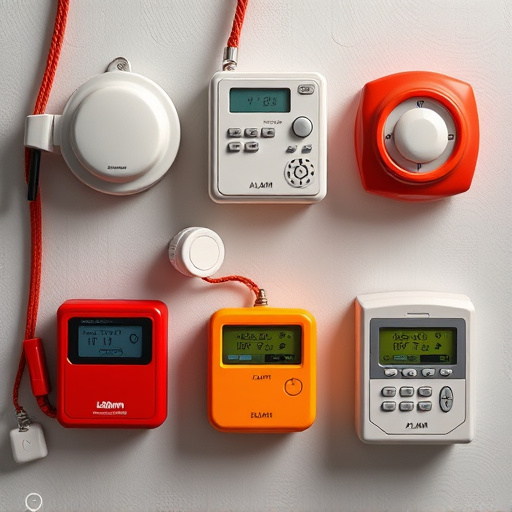Personal Safety Necklaces offer a modern solution for individual safety with their discreet SOS button, siren, and GPS tracking, activated via cellular networks or hard impacts. Designed for durability, these necklaces feature robust construction, durable materials, and impressive battery life that can span several days to weeks, ensuring reliability without frequent recharging. To optimize battery health, users should employ strategic usage patterns, maintain moderate temperatures, and regularly replace or recharge batteries according to manufacturer guidelines. Effective use hinges on prioritizing battery life, choosing devices with high-capacity, energy-efficient batteries, and keeping the siren easily accessible for emergencies.
Personal safety necklaces equipped with SOS features are revolutionizing emergency preparedness. In today’s world, knowing how to activate a personal safety siren can be a lifeline. This article explores the modern solution of these compact devices, delving into their technology and functionality. We’ll guide you through choosing and using your safety necklace effectively, while also addressing critical factors like battery life—ensuring peace of mind when it matters most.
- Understanding Personal Safety Necklaces: A Modern Emergency Solution
- How Do SOS Necklaces Work? Unraveling the Technology
- Factors Affecting Battery Life: Maximizing Your Safety Device's Duration
- Ensuring Peace of Mind: Tips for Choosing and Using Your Personal Safety Siren
Understanding Personal Safety Necklaces: A Modern Emergency Solution
Personal Safety Necklaces, equipped with a small, discreet SOS button, represent a modern emergency solution for individuals concerned about their personal safety. These innovative devices allow users to quickly and quietly summon help in case of an unexpected situation, such as getting lost, being followed, or facing an emergency while alone. The core feature is a built-in siren that emits a loud alarm when activated, attracting attention and signaling distress.
These necklaces are designed with longevity in mind, featuring robust construction and durable materials to withstand daily wear. Moreover, they boast impressive battery life, ensuring users can rely on the device when it matters most, without worrying about frequent replacements or recharges. The long-lasting battery is a significant advantage, especially during outdoor adventures or in situations where access to power sources is limited.
How Do SOS Necklaces Work? Unraveling the Technology
Personal Safety SOS necklaces are designed to provide critical assistance in emergency situations, utilizing advanced technology to ensure swift response times. At their core, these devices typically consist of a small, discreet pendant attached to a lanyard or chain that can be worn around the neck. Inside the pendant is a compact speaker and a powerful siren that can emit loud, piercing sounds to attract attention and signal distress.
The technology behind SOS necklaces leverages both cellular networks and GPS for tracking and communication. When activated, the device uses its built-in microphone to detect an emergency situation, such as falling or hitting hard surfaces. It then automatically sends out an alert, often in the form of a text message or an app notification, to pre-selected emergency contacts. Additionally, the siren is activated to draw attention from nearby individuals who might be able to provide assistance. The battery life of these necklaces is another critical factor, designed to last for several days to weeks between charges, ensuring continuous protection during outdoor adventures or daily commutes.
Factors Affecting Battery Life: Maximizing Your Safety Device's Duration
The battery life of personal safety necklaces with SOS features, often equipped with a siren, is influenced by several key factors. One primary consideration is the frequency and duration of use. Continuous activation of the siren for extended periods significantly drains the battery quicker than sporadic, short bursts. Additionally, environmental conditions play a role; extreme temperatures, both hot and cold, can impact battery performance and longevity.
To maximize your safety device’s battery life, it’s recommended to employ strategic usage patterns. Brief, regular checks rather than prolonged continuous operation help conserve power. Furthermore, keeping the device in moderate temperature ranges ensures optimal battery health. Regularly replacing or recharging the batteries according to manufacturer guidelines is also essential for maintaining peak performance.
Ensuring Peace of Mind: Tips for Choosing and Using Your Personal Safety Siren
Ensuring Peace of Mind: Tips for Choosing and Using Your Personal Safety Siren
When selecting a personal safety siren, consider its battery life as a top priority. You want a device that offers reliable, long-lasting power to ensure you have the peace of mind needed in an emergency. Look for sirens with high-capacity batteries and energy-efficient design, which can provide hours of continuous operation. Regularly checking and replacing the batteries is also crucial, making sure your siren remains fully functional when you need it most.
Proper usage involves keeping the siren easily accessible, understanding its activation mechanisms, and familiarizing yourself with local laws or guidelines regarding personal safety alarms. Test the device periodically to confirm its readiness and ensure any associated app or monitoring service is set up correctly. By following these tips, you can maximize the effectiveness of your personal safety siren, providing an extra layer of security in uncertain situations.
Personal Safety Necklaces with SOS features offer a modern solution for emergency situations, providing peace of mind and enhanced security. By understanding how these devices work and choosing one that suits your needs, you can maximize their effectiveness and battery life. Regular maintenance and awareness of factors affecting battery performance are key to ensuring your personal safety siren remains reliable when it’s needed most.
